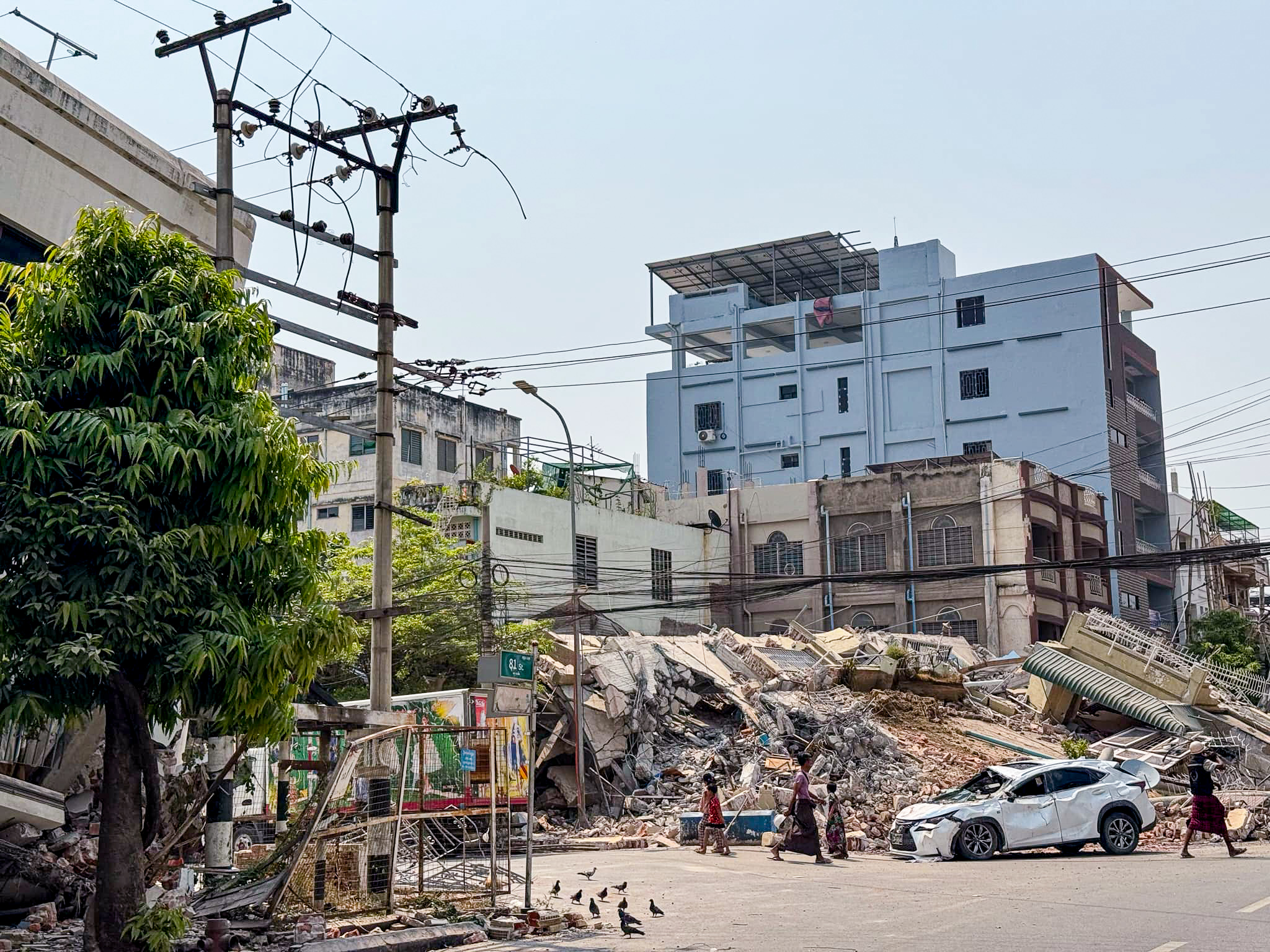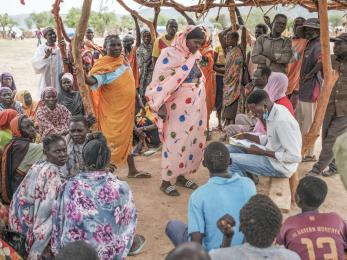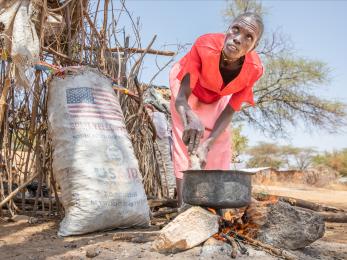One year of crisis in Gaza: Through the eyes of our team members
Since October 7, 2023, the escalation of violence in response to the horrific Hamas attacks against Israeli civilians has spiraled into a humanitarian catastrophe of historic proportions. Our team members* in Gaza have shared their direct experiences living through this crisis.
These are some of their accounts of searching for safety, grappling with water and food scarcity, and facing daily challenges posed by the ongoing conflict.
*For the safety and security of our team members, their image or likeness are not shown in the following photographs and videos, and all of their names have been changed.
Devastation and displacement
We fled our home in southern Gaza to seek safety with a family member but when the neighbouring home was bombed without warning, we had nowhere to go.
Nasma, Mercy Corps Team Member
Facing evacuation orders and constant bombardments, the people of Gaza have been forced to seek shelter and safety time and again amid rapidly dwindling resources and a shattered infrastructure. Our team members continue to serve their communities however they can with the added complexity of navigating the challenges that come with war.
One of our Gaza Sky Geeks participants, who I believed was going to change the world, was killed by an airstrike with her entire family.
Nasma, Mercy Corps Team Member

Today, at least 1.9 million people—90% of the population—have been forced from their homes, including people who have been displaced up to ten times or more seeking a safe place to shelter.
Previously, everyone would evacuate, but now some prefer to remain in their areas, choosing death over the hardship of displacement.
Nader, Mercy Corps Team Member
Running out of water
With desalination plants decimated, wastewater plants destroyed, and humanitarian aid blocked, access to clean water has become extremely limited. To survive, people must endlessly wait in line to get water for drinking, cooking, and cleaning—and oftentimes it’s contaminated.
We have a little water to drink. But people are really suffering from the lack of clean drinking water. I know people who have been drinking non-potable water for two weeks ...
Awni, Mercy Corps Team Member
As of July 2024, 88% of the water wells in Gaza have been damaged or destroyed.
The physical toll is real—I’ve been having severe stomach pains, likely from the contaminated water we’re forced to drink.
When I look at myself now, compared to before, I hardly recognise myself—none of us are the same. Our personalities have changed, our mental state has deteriorated, and even our appearances have altered.
Lena, Mercy Corps Team Member
Rising risk of famine
While humanitarian organisations work around the clock to overcome the challenges of blocked border crossings, impassable roads, and shrinking warehouse space to deliver urgent relief, food continues to be extremely scarce—and costly when it is available.
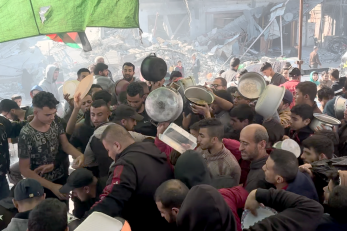
I know people who haven’t had a piece of bread for over a month ... We now eat only once a day and say it’s enough.
Waleed, Mercy Corps Team Member
All of the estimated 2.1 million people in Gaza today remain at immense risk of famine.
There is barely anything edible at the grocery store.
Riham, Mercy Corps Team Member
We only bake bread from the feed, and people smell the bread and come to ask for it. Some people, due to hunger, are risking their lives and going to the south so they don’t die of hunger.
Asma, Mercy Corps Team Member
We felt abandoned, with no resources or support. The lack of money, goods, food, water, and electricity made life unbearable. ... We survived on whatever scraps we could find even molded bread.
Lojain, Mercy Corps Team Member
Unraveling health and safety
Months of ongoing violence, inoperable hospitals and health services, severe overcrowding, and a lack of clean water and hygiene supplies have led to trauma, injury, and the deaths of tens of thousands of innocent people.
I woke [my 6-month-old baby] up just to play with her and hug her. If this would be my last night at least I got the chance to hug my daughter for the last time.
Nader, Mercy Corps Team Member
The polio virus was detected in wastewater in July 2024, putting tens of thousands of children at risk of contracting a disease that hasn’t been seen in Gaza for 25 years.
Diseases have spread greatly. We are hearing about diseases we have never heard of before in our lives.
Zaid, Mercy Corps Team Member
Relief restricted by violence and blockades
Despite closed border crossings and ongoing obstructions and restrictions on aid entering the region, our teams have managed to successfully deliver and distribute food, emergency cash, and sheltering supplies by partnering with local organisations.
Our team’s determination to get back to providing support helped reopen mental health programming for young people and their caretakers.
After several weeks of hard work, our Positive Youth Engagement started activities on psychosocial support for mothers and adult caretakers.
Salma, Mercy Corps Team Member
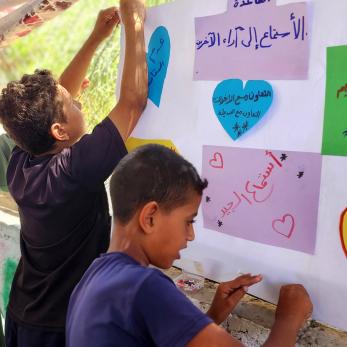
All told, our humanitarian community has lost more than 280 aid workers in Gaza over the last year, more than any other conflict in the past 20 years.
Our continued commitment to communities across the region
Over this past year, Mercy Corps has provided support to 172,000 people in Gaza and more than 5,700 families in Lebanon. We have worked in Palestine for nearly 40 years and in Lebanon for over thirty years. While our team members have partnered with communities to improve access to clean water and economic opportunities, we have also worked to promote peace and stability in the region by addressing root causes of conflict and poverty.
Even with the immense difficulties of providing support and services to Gaza, we are committed to helping communities cope during this most challenging time and are ready to scale our operations as soon as it is safe and feasible to do so. We won’t stop using our voice, experience, and partnerships to deliver relief.
